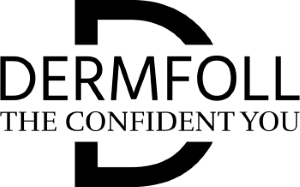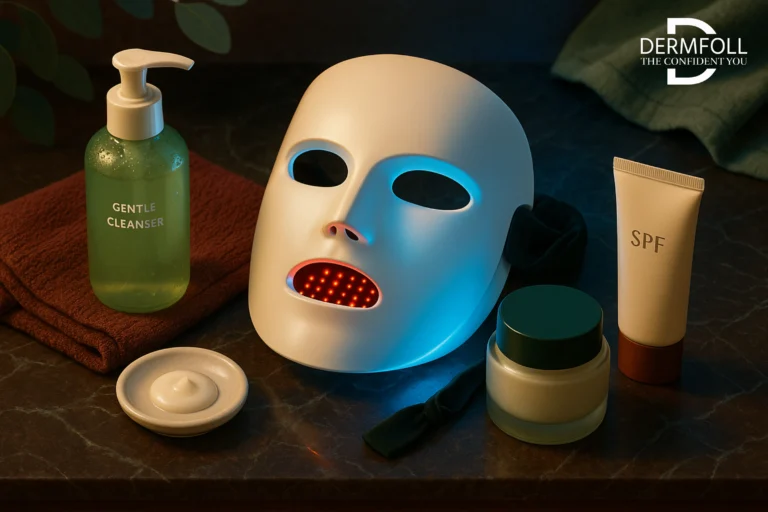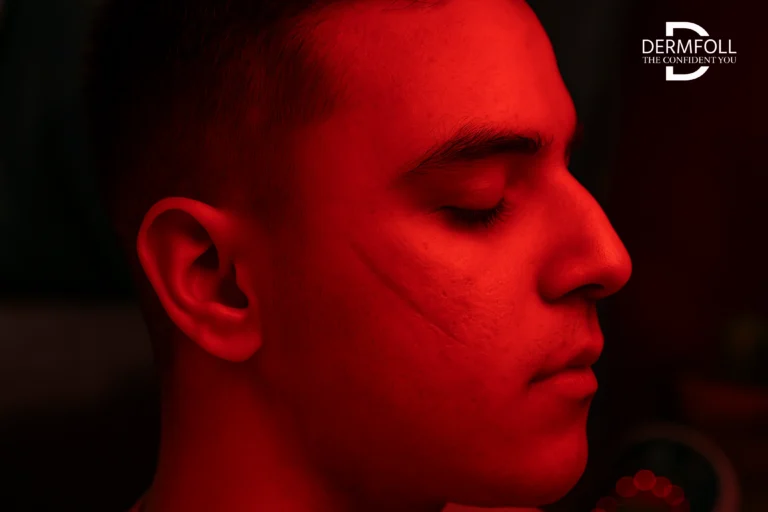You’ve finished your RF treatments, your skin feels tighter, and maybe you’re finally seeing that lift you hoped for. But then comes the question I hear all the time: “How long do these results last, and what now?”
Whether you’ve gone the clinical route or picked up an at-home device, navigating your rf treatment schedule after the initial glow can be confusing. There’s a lot of hype around RF, but not much guidance on what realistic rf skin tightening maintenance actually looks like.
In this post, I’ll walk you through the essentials, how many sessions it typically takes, how long results usually last (your rf facial results timeline), and how age, skin type, and device strength influence your maintenance needs. We’ll also look at whether it’s better to stick to a schedule or treat your skin “as needed.”
My goal? To give you clear, trustworthy advice, so you can make informed choices and keep your skin looking its best without second-guessing every step.
Let’s get into it.
Typical post-treatment RF maintenance timelines
So, you’ve just wrapped up your RF treatments and your skin’s feeling tighter, smoother and, maybe even a little lifted. It’s that post-treatment glow we all hope for.
But now you’re wondering, “Okay… what’s next? How long will these results actually last, and how often do I need to keep doing this?”
Let’s break it down together, whether you’re using a clinic-based device or one of the newer at-home RF tools.
Is there a standard RF treatment schedule after your initial in clinic sessions?
Here’s the thing. There isn’t a strict, universal rf treatment schedule that applies to everyone. Especially once the initial phase is complete.
When we’re talking about professional RF treatments, The studies and clinical trials don’t hand us a simple playbook that says, “Come back every six months and you’re all set.”
What we do know is that with in-office RF, the benefits can stick around for a few months, depending on how your skin responds. This gives you a window to monitor changes and decide if or when a “booster” might be right for you.
How many RF sessions do you need to see results?
For professional treatments, most protocols begin with 3 to 6 sessions, spaced out every 2 to 3 weeks. This allows for gradual collagen stimulation and cumulative tightening.
Think of it like layering bricks to build a strong foundation—each session adds to the structure.
Now, at-home RF devices are a little different. Since they’re less powerful (for safety reasons), they usually require more frequent use.
Often 2 to 3 times per week, and over a longer period to achieve noticeable results. The trade-off is the convenience, you can do them from your bathroom, no appointment needed.
How long do RF facial results really last?
This is where professional RF really shines. Many clinical studies show that your rf facial results timeline can stretch several months beyond your last session.
For example, skin continued to tighten and improve for up to 24 weeks, that’s six months—after just one in-office treatment. In other cases, collagen kept building even three months after completing a multi-session series.
That’s because RF doesn’t just tighten your skin instantly. It kick-starts neocollagenesis, your skin’s natural collagen regeneration process, which unfolds gradually over time.
At-home devices can also promote collagen production, but the results are usually more subtle and require ongoing, consistent use to maintain.
What is RF skin tightening maintenance and why does it matter?
Let’s get real—RF isn’t permanent. Your skin keeps aging, whether you’ve had treatments or not. Collagen naturally breaks down, and environmental factors like sun exposure, stress, and even diet can speed up that process.
This is why rf skin tightening maintenance matters. For professional treatments, many providers recommend maintenance sessions every 4 to 6 months, depending on your skin’s needs and how quickly you’re skin ages.
If you’re using an at-home RF device, maintenance looks more like weekly or biweekly sessions as part of your regular skincare routine.
It’s a lighter, ongoing investment of time—but consistency is key. Skip too many sessions, and results can start to fade.
I think of it like going to the gym. One great workout won’t keep you toned forever. RF works the same way—whether in a clinic or at home, staying on track will help you preserve those gains and age more gracefully.
Variations by age, skin type, and device
You might have noticed that RF treatments seem to work differently for different people—and that’s fine. Your results can vary quite a bit depending on three main things: your age, your skin type, and the kind of device you’re using.
Understanding these factors can help you set realistic expectations and tailor your rf skin tightening maintenance plan to your skin’s unique needs.

How age affects your RF results
Age plays a major role in how your skin reacts to RF. If you’re in your late 20s to mid-30s, your collagen levels are still holding strong.
In this stage, at-home RF devices can often be enough to maintain firmness and slow down the visible signs of aging—like softening those early forehead lines or keeping your jawline crisp.
Once you hit your 40s or 50s, your skin’s natural collagen production starts to drop. That’s when professional RF treatments tend to deliver more noticeable results.
You might need a series of sessions or slightly stronger energy settings to jumpstart deeper collagen remodeling and get that firm, lifted look back.
For those in their 60s and beyond, RF can still help, but results may be more subtle and take longer to appear.
At this stage, laxity is often more advanced, and combining RF with other treatments might be necessary. Maintenance sessions, whether at home or in the clinic, also become more frequent if you want to keep your skin in shape.
Is RF safe and effective for all skin types?
The good news? RF is generally safe for all skin tones, including darker complexions (Fitzpatrick skin types IV to VI), since it doesn’t rely on light energy like lasers do.
That makes it a great option for those who might not be candidates for other treatments that carry pigmentation risks.
That said, not all studies have included a wide range of ethnicities or skin tones. Some research focused only on Fitzpatrick types III and IV, or specific populations like East Asian skin.
So while RF is promising across the board, more inclusive studies are still needed.
If you’re using an at-home RF device and you have sensitive or reactive skin, conditions like rosacea, or an impaired barrier, it’s worth checking with a dermatologist first.
Even though these devices are designed to be gentle, your skin might need extra care.
Why the device type makes all the difference
This one’s big. The type of RF device you use can dramatically shape your results.
In a clinical setting, providers have access to monopolar, bipolar, multipolar, and fractional RF machines, each designed for different treatment depths and goals.
- Monopolar RF (like Thermage) penetrates deeply and is ideal for treating sagging areas like the jawline, neck, or cheeks.
- Fractional RF is great for texture concerns, like acne scars or large pores, and it’s suitable for nearly all skin types.
- Bipolar and multipolar RF are often used in combination treatments or on patients with mild to moderate laxity.
At-home RF devices- These are typically bipolar or multipolar, offering a gentler form of energy that’s safe for frequent use. They’re best for preventative care or for maintaining results between professional treatments.
Just know that because the energy is lower, you’ll need more frequent sessions to keep those results going.
Also, don’t underestimate the human factor. With professional RF, the skill of the practitioner matters. Things like pressure, timing, and motion all impact how well the treatment works. So if you’re going the clinic route, experience counts.
| RF Modality | Common Brand Names | Typical No. of Sessions | Expected Downtime | Depth of Penetration | Key Benefits / Targets |
|---|---|---|---|---|---|
| Monopolar RF | Thermage | 1 (sometimes 2) | Minimal (redness/swelling for hours to 1 day) | Deep dermis, subcutaneous tissue | Skin tightening for sagging areas, contouring, deeper wrinkles, eyelid firming |
| Bipolar / Multipolar RF | Venus Freeze, Accent Prime | Series of 3–8 | Minimal (transient redness) | Superficial to mid-dermis | Mild laxity, fine wrinkles, texture enhancement, cellulite smoothing |
| Fractional RF Microneedling | Morpheus8, Potenza, Infini RF | 3–4 sessions | 1–7 days (redness, swelling, pinpoint scabbing) | Variable (epidermis to deep dermis, adjustable) | Acne scars, wrinkles, pores, significant tightening, texture correction |
| Fractional RF (Non-Needling) | eMatrix | 3–5 sessions | 1–3 days (redness, mild swelling, grid marks) | Superficial dermis | Textural refinement, mild wrinkles, superficial scars, pore reduction |
Comparing outcomes: consistent maintenance vs “as needed” touch-ups
So you’ve done your RF treatments, your skin is looking firmer, and now you’re thinking: “Do I need to keep doing this every week or month, or can I just come back when things start sagging again?”
A valid question, and one that comes up all the time, especially when people are trying to figure out how to fit rf skin tightening maintenance into real life.

What consistent RF maintenance looks like
When we say “consistent maintenance,” we’re talking about treating your skin on a regular, structured schedule, before you actually start to notice things slipping.
For at-home RF users, this usually means 2 to 3 sessions per week during the first couple of months.
Once you start seeing visible results, like firmer contours or smoother texture. You can often move into a weekly or biweekly routine to keep your collagen production gently activated.
The key here is rhythm: you’re maintaining momentum so your results don’t taper off.
With professional RF, consistency typically looks like a single maintenance session every 3 to 6 months after your initial treatment series. This helps refresh collagen activity and gives you long-term support against ongoing aging.
The benefit of consistency, especially with at-home RF, is that it’s much easier to preserve your results steadily over time instead of trying to play catch-up later.
What “as needed” touch-ups really mean
The “as needed” approach is more reactive. You wait until you see signs of laxity—like a little softening in the cheeks or jawline, and then jump back in.
This is especially common with professional RF, where users may book sessions only when something starts to bother them visually.
Some at-home users fall into this pattern too, skipping treatments for weeks, then trying to restart when skin begins to feel less firm.
The downside? You often need to rebuild what was lost. And the longer the break, the harder your skin has to work to respond again.
Is one approach better than the other?
There’s no one-size-fits-all answer here, but from what we know, consistent maintenance generally leads to better long-term results, especially if you’re using an at-home RF device.
These devices are designed for frequent, lower-intensity use, so skipping weeks at a time can interrupt the progress your skin is making.
On the other hand, touch-ups can work well if you’re dealing with mild laxity or just want to refresh things every now and then.
Many people even take a hybrid approach: they stick to a schedule at first (especially with a new device), then shift into more flexible use once results are stable.
At-home RF works best when used consistently. A little discipline in the early months goes a long way toward achieving smoother, longer-lasting results—without having to start from scratch each time.
CONCLUSION
Alright, let’s do a quick recap—because we covered a lot, and you deserve to walk away feeling clear on your next steps.
- There’s no one-size-fits-all RF treatment schedule. Everyone’s skin ages differently, so your maintenance routine should match your pace, not some cookie-cutter calendar.
- Consistency really is the magic ingredient. Whether you’re doing professional sessions every few months or using your at-home RF device a few times a week, keeping up with your routine helps maintain results—and avoids that back-to-square-one feeling.
- RF facial results don’t fade overnight. Thanks to collagen remodeling, the effects can last for weeks or even months post-treatment, especially with in-office devices.
- Age, skin type, and device strength all play a role. Your 30s skin doesn’t behave like your 50s skin. And a handheld home tool won’t go as deep as a clinical monopolar machine. Knowing what you’re working with = smarter maintenance.
- You can personalize your maintenance. Weekly? Monthly? Touch-ups only? There’s flexibility here—as long as you’re tuned into your skin’s signals.
And that’s the beauty of RF—you’re not locked into one path. You’re learning, adjusting, and making it work for you.
Ready to see what happens if you press pause for a bit? Let’s head into the next post and unpack that.








